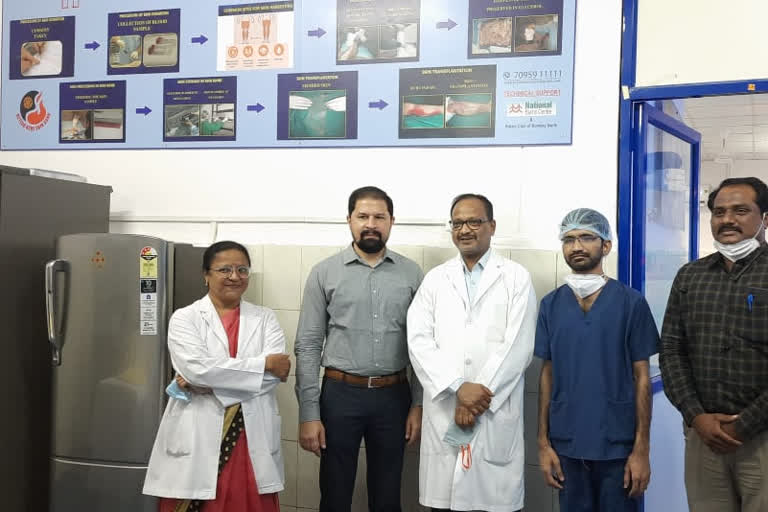Hyderabad: Osmania Hospital has recently set up a skin bank with the help of Hetero Drugs and Rotary Club at a cost of about Rs 70 lakh. The doctors at Osmania Hospital successfully conducted the first collection of skin from brain dead woman donor. The collected skin is stored at a first skin bank set up in the hospital. A 53-year-old woman who was injured in a recent accident and is being treated at Jubilee Hills Apollo Hospital has gone brain dead.
Family members came forward to donate her organs. They accepted skin donation along with liver and kidneys. Osmania dermatologists collected her skin at Apollo Hospital and transported her to the skin center, Osmania Superintendent Dr Nagender said that 16 skin grafts were collected from a brain-dead woman.
Under the auspices of the Jeevanandan Trust, skin is collected from the brain dead, stored here, and used by those who need it. Some hospitals in Telugu states are doing heart, liver, kidney, and lung transplant treatments. No hospital maintains the technology to collect and preserve skin. Private hospitals that treat burns skin also do not have these arrangements.
Also Read: 4 Ways Psoriasis Can Worsen If Not Managed Well
"It is a privilege to have such a bank available for the first time in Osmania," said Dr. Nagender. He congratulated the doctors and technicians who worked for this. Plastic surgeon Dr Nagprasad said that "once-collected skin could be stored at the Osmania Center for up to five years." Skin Bank Coordinator Dr. Madhusudan Nayak and Dr. Nishant were present in this program.
Dr Nagprasad further said, "Burns, severe injuries to the hands, feet, and other parts of the body, crooked hands with leprosy, correction of limbs, amputation of amputated hands, fingers and other treatments require skin. So far the skin has been collected from the legs, arms, thighs, skull, and other parts of the patient's body and placed on the injured area by grafting."
"The collection of skin is possible up to 15-20 percent from the patient body. Shortage solved with skin bank. Of the patients who are injured in accidents, come to Osmania hospital. But due to the unavailability of skin 120 people die each year." Dr Nagprasad added.
The skin has layers of epidermis, dermis, deep dermis, and subcutaneous tissue. The deep dermis and most of the lower layers are damaged in many people injured in fires. All the protein in the body is excreted in the form of water. Most people die from infections. Severe injuries all over the body can be difficult to treat.
Also Read: WATCH: Hyderabad's Osmania hospital inundates again after heavy rain
For such people, temporary skin grafting is done to control infections. The patient is saved from death. It gives protection for three weeks. After that, it blows away.



